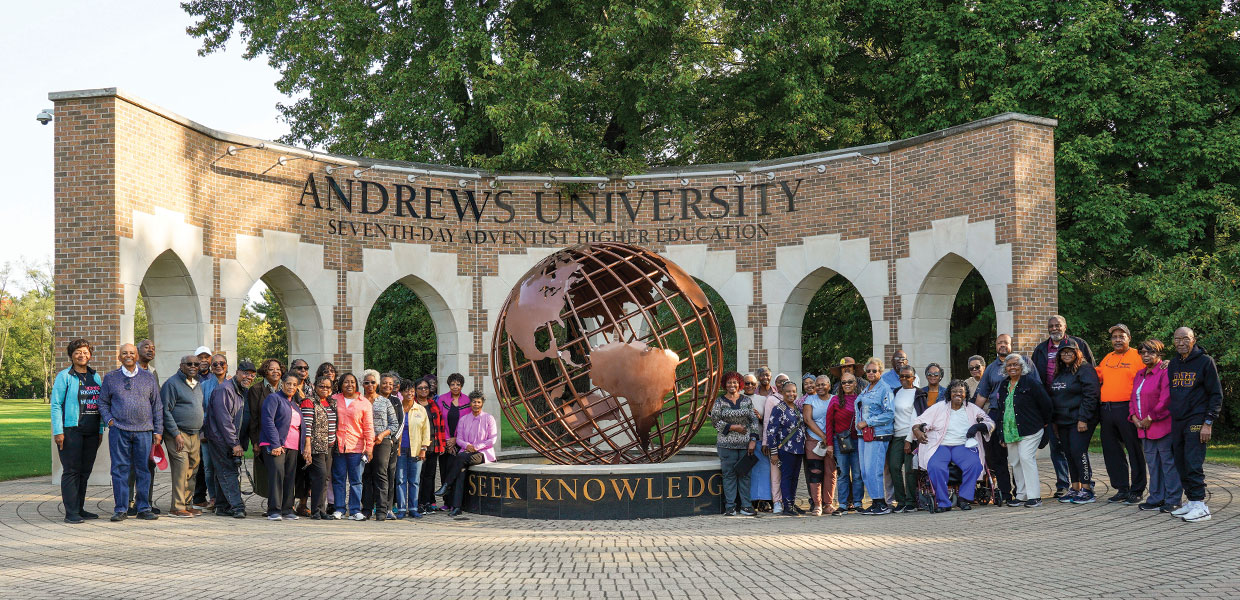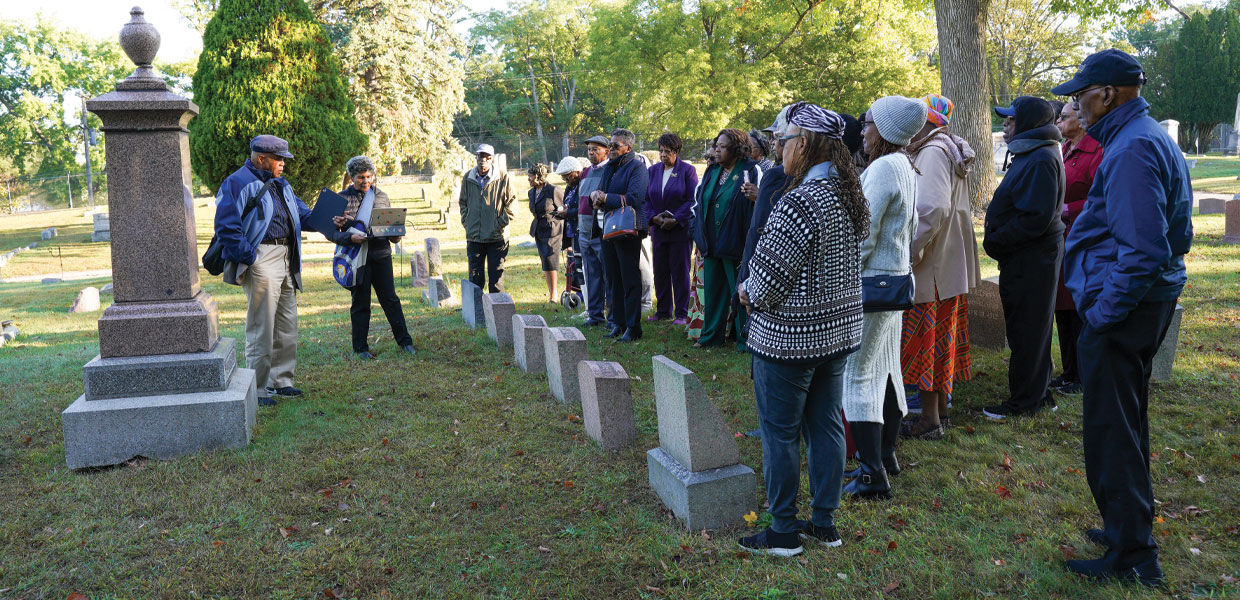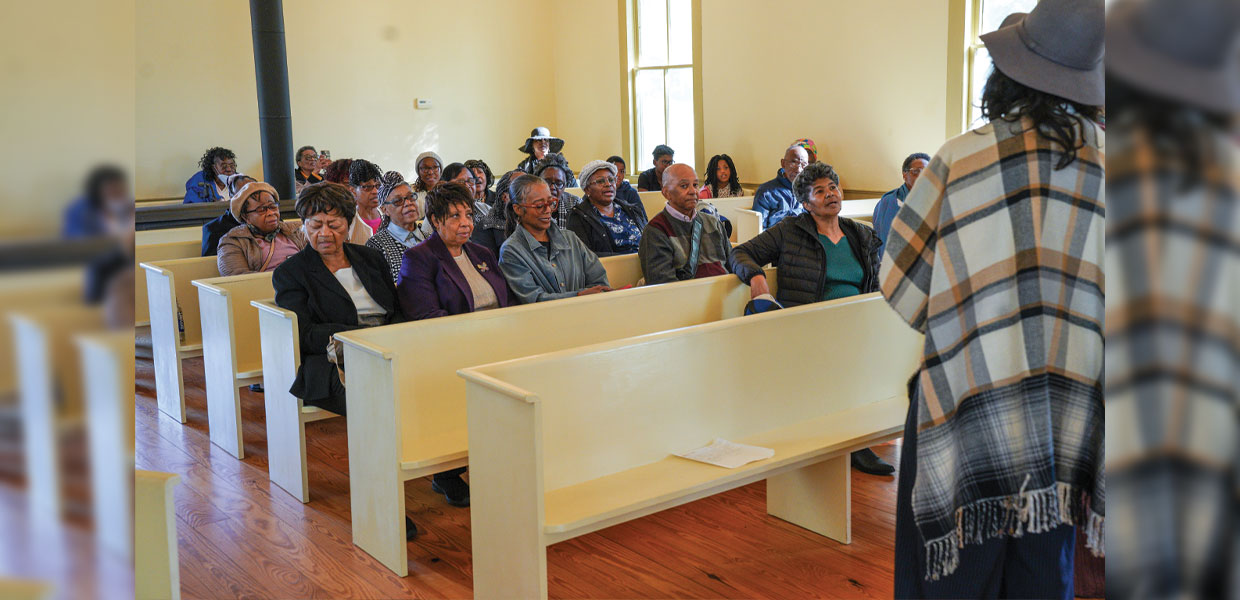
Joseph Booth

Joseph Booth

Joseph Booth
Forty-six chronologically gifted persons from the South Atlantic and South Central conferences followed the Underground Railroad through Tennessee, Kentucky, and Indiana to Michigan on the Freedom Tour.
The five-day tour, October 3-7, 2024, sponsored by the South Atlantic Conference Senior Ministries Department, provided an opportunity for participants to see how God timed the Anti- Slavery Movement, the rise of the Millerite Movement, and the establishment of the Seventh-day Adventist Church to free Blacks in the South from slavery to men and sin.
Their guide, R. Steven Norman III, pastor, historian, and retired communication director for the Southern Union Conference, pointed out that the anti-slavery movement and the Millerite movement began in the same year — 1831. Additionally, the Emancipation Proclamation and the 13th Amendment, which abolished slavery, and the organization of the Seventh-day Adventist Church occurred between 1863 and 1865. In addition, Battle Creek is considered the Michigan capital of the Underground Railroad as well as the center for early Adventists, many of whom held antislavery convictions and had been active in opposing slavery.
Leaving Collegedale, Tennessee, the group traveled across Missionary Ridge, where they recalled the battle of Missionary Ridge that broke the back of the Confederacy. Then, they visited Moccasin Bend in Chattanooga, Tennessee, where Jacob Cummings escaped from slavery and became an agent of the Underground Railroad.
Next, they stopped in Nashville, Tennessee, at the site of the Nashville Slave Market, the South Central Conference office, the former Riverside Hospital, and the new Charles and Etta Dudley Foundation.
In Louisville they visited the monument to Abraham Lincoln, who said, “As I would not be a slave; nor would I be a slave master.” While in the park, Norman told them about Adam and Sarah Crosswhite, who escaped slavery in Kentucky and settled in Marshall, Michigan, just 13 miles from Battle Creek, Michigan. Their successful escape led to the passing of the 1850 Fugitive Slave Law.
The first of three highlights in Battle Creek was a tour of the Oak Hill Cemetery, where they visited the graves of Adventists and persons of other faiths who took a strong stand against slavery. The Adventists included Ellen and James White, who were outspoken opponents of slavery, John Preston Kellogg, and John Byington who served on the Underground Railroad. Byington would later become the first General Conference president. The group also visited the graves of Erastus H. Hussey, who was the station master for the Battle Creek Branch of the underground railroad, and helped more than 1,000 enslaved persons to freedom, and Sojourner Truth, a staunch abolitionist, women’s suffragist, and advocate for prison reform.
Another highlight was having Sabbath worship services in the Parkville Church. This is the church where Ellen White had a vision about the Civil War before it happened. After the vision, John N. Loughborough, author of Rise and Progress of Seventh-day Adventists, recalls she told those in attendance, “There is not a person in this house who has even dreamed of the trouble that is coming upon this land. People are making sport of the secession ordinance of South Carolina, but I have just been shown that a large number of States are going to join that State, and there will be a most terrible war…” Then, looking slowly around the house, she said, “There are those in this house who will lose sons in that war.” Three months later, several states joined South Carolina, and on July 12, 1861, the first gun was fired. After the war, an elder of the church who was present on January 12, 1861, recalled five persons who were present who had sons who died in the war, (Loughborough 1892).
Because of the Parkville Church’s historical significance, the Southern Union Conference, Oakwood University, and other organizations in the Florida Conference all participated in moving and restoring the church from Parkville, Michigan, to the Historic Adventist Village in Battle Creek. The restored church was dedicated on August 23 and 24, 2002.
On Sabbath afternoon, tour guests visited other sites in the Historic Adventist Village. From Battle Creek, they traveled to the Seventh-day Adventists denomination’s first college, Emmanuel Missionary College, now Andrews University in Berrien Springs, Michigan. Following a ride through the campus, they enjoyed a walk through it. They saw the monument to John Nevins Andrews, for whom the University is named. He was the first official missionary of the Seventh-day Adventist Church.
Returning from Battle Creek, they stopped in Tennessee at Edgefield Junction, where Elbert B. Lane, who is buried in Battle Creek’s Oak Hill Cemetery, preached, and where the first Black Seventh-day Adventist Church was organized in 1883, as well as in Madison near where Edson White docked his Morning Star boat. Here, Ellen White recommended purchasing the Nelson-Ferguson Farm for what would become Madison Sanitarium and College.
The Battle Creek Freedom Tour was unique, historic, and unforgettable.
South Atlantic | January 2025



Comments are closed.